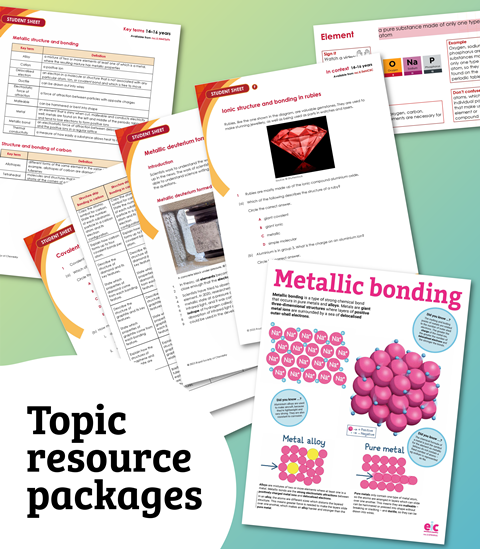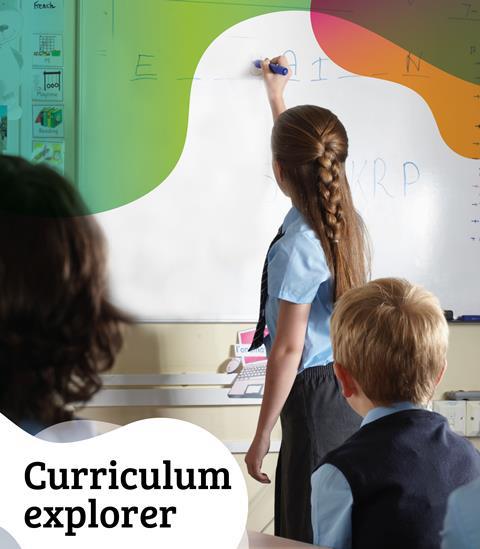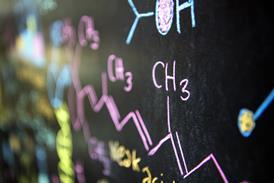All Properties of matter articles – Page 5
-
 Resource
ResourceProperties of metals and non-metals
Challenge the misconception that metals and non-metals are completely opposite in their properties with this activity
-
 CPD article
CPD articleHow to teach non-metals
Showcasing samples and gas tests are imperative when introducing non-metal elements to students
-

-
 Ideas
IdeasEscape the classroom: advanced challenges for older students
Six more puzzles to challenge and enthuse your students
-
 Soundbite
SoundbiteWhy smoke particles turned the sky red
Nina Notman explains why forest fires in Indonesia made the sky look red
-
 Ideas
IdeasGif me your best teaching ideas
Making videos of microscale experiments is easy and draws students’ attention to key concepts
-
 Resource
ResourceTrends in the periodic table starters | 16–18
A great Starter for ten activity to engage your students with trends in the periodic table by focusing on group 2, group 3 and group 7.
-
 Resource
ResourceBonding starters | 16-18
Starter for ten quizzes that focus on bonding topics like the nature of chemical bonds, covalent bonding and properties and bonding.
-
 Ideas
IdeasThey’ll learn more with bar models
Simplify the maths in science with this pictorial approach – and improve understanding
-
 CPD article
CPD articleStates of matter and particle theory
Progressing from macroscopic to the microscopic world of the particle
-
 Class experiment
Class experimentPrecipitation reactions of lead nitrate
Compare the colours of various lead compounds to identify which would be good pigments in this microscale practical. Includes kit list and safety instructions.
-
 Class experiment
Class experimentSome reactions of sulfur dioxide
Observe the reactions of sulfur dioxide with potassium manganate (IV), iodide/iodate mixture and indicator solution. Includes kit list and safety instructions.
-
 Class experiment
Class experimentMicroscale reactions of ammonia
Try this practical to explore the reactions of ammonia with indicator solution, copper(II) sulfate solution and Nessler’s reagent. Includes kit list and safety instructions.
-
 Class experiment
Class experimentMeasuring density
By measuring the relative mass of seawater and tap water, students will be able to discover the density of these liquids. Includes kit list and safety instructions.
-
 Class experiment
Class experimentThe chemical properties of phenol
Observe and interpret some of the chemical reactions of hydroxybenzene (phenol), by adding five different substances to a Petri dish, and noting down findings. Includes kit list and safety instructions.
-
 Class experiment
Class experimentDiffusion of gases and relative molecular mass
Try this class practical to explore the diffusion of gases and how relative molecular mass affects rate of diffusion. Includes kit list and safety instructions.
-
 Class experiment
Class experimentOxidation states of iron
Compare the two main oxidation states of iron and consider explanations for differences in this microscale practical. Includes kit list and safety instructions.
-
 Class experiment
Class experimentProperties of group 2 elements
Microscale experiment where various anion solutions are added to drops of group 2 element cations. Includes kit list and safety instructions.
-
 Class experiment
Class experimentSulfate and carbonate solubility of Groups 1 and 2
Try this microscale practical to explore the properties of elements in Groups 1 and 2 as they form various precipitates. Includes kit list and safety instructions.
-
 Class experiment
Class experimentThe chemistry of silver
Discover the properties of silver compounds with redox reactions, complex formation and colour/state changes. Includes kit list and safety instructions.











